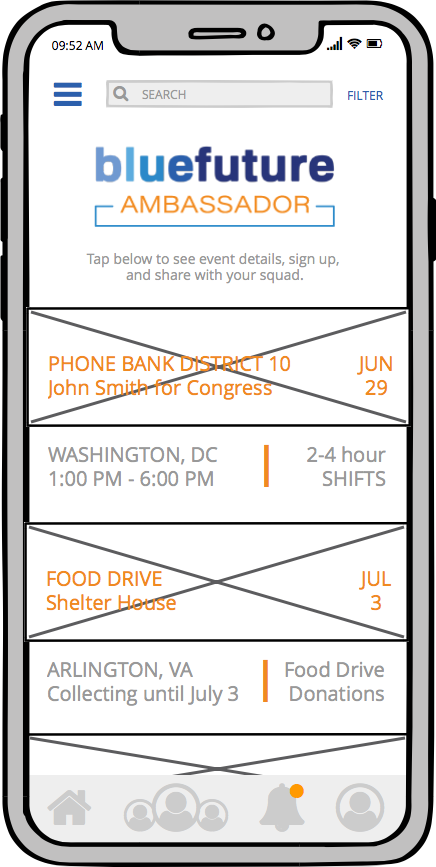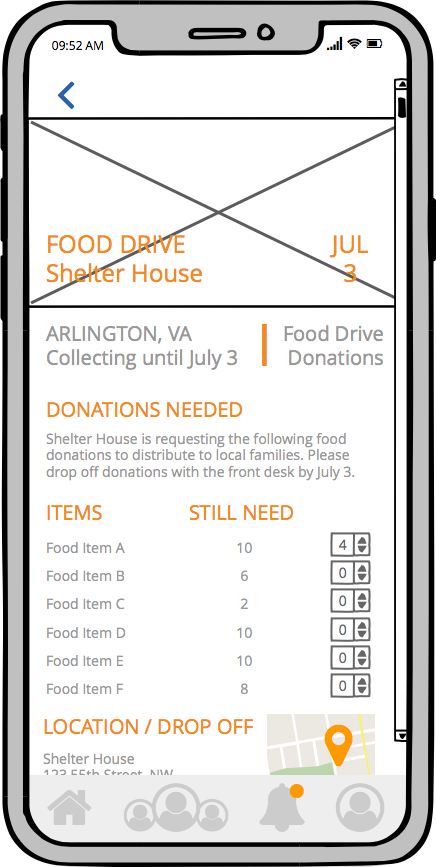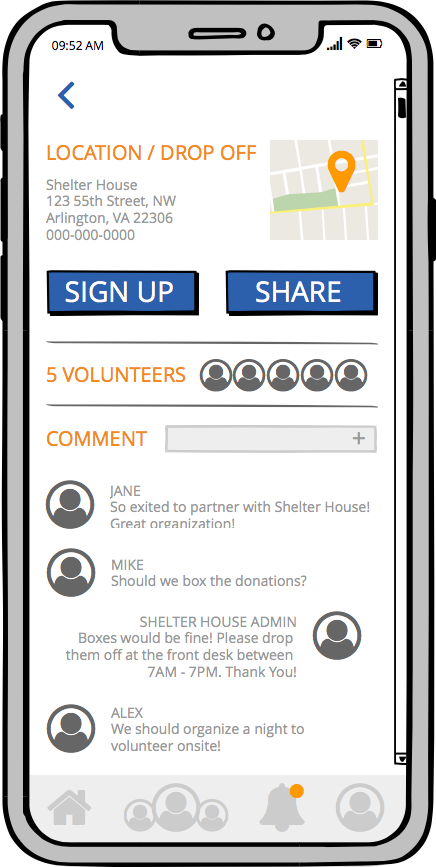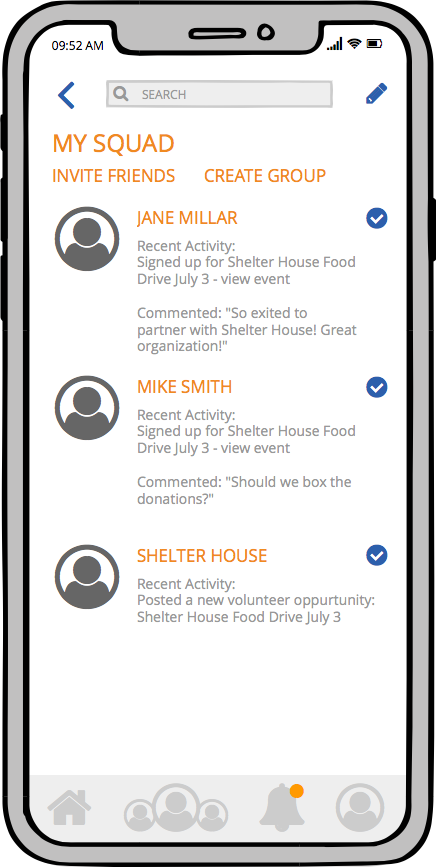PROJECT SCOPE
CLIENT: Blue Future is a youth-led civic engagement organization that promotes training, volunteer, and campaign opportunities around political engagement.
OBJECTIVE: Identify and design a creative way to empower and engage young people (ages 16–25) through a mobile application that speaks to a need and will assist Blue Future in its mission to ease the barriers of entry around politics and increase civic engagement.
After reviewing Blue Future’s current web presence I started thinking about engagement, specifically volunteerism. Why do we donate our time, what organizations do we choose to volunteer with, and what barriers hold us back from engaging with organizations?
TIMELINE: 2 weeks
PROJECT ROLES: User research and interviews, market research, paper and rapid prototyping
TOOLS: Paper sketching and Balsamiq
User Interviews
During my user interviews several themes emerged, the number one being time — not having enough of it between work, other responsibilities, and commitments. Time was the first thing each of our seven interviewees mentioned. Other themes included proximity to an event, familiarity with the organization, being more inclined to volunteer with friends or in groups, and no one asking them to volunteer.
“Volunteering takes a lot of time”
“The event isn’t close to where I live or work”
“I volunteer with my co-workers when it is a company sponsored event and during work hours”
“I previously volunteered with the organization”
“My Mom got me involved with the organization so I volunteered with them again when an opportunity came up”
“I haven’t been asked . . .”
“The event isn’t close to where I live or work”
“I volunteer with my co-workers when it is a company sponsored event and during work hours”
“I previously volunteered with the organization”
“My Mom got me involved with the organization so I volunteered with them again when an opportunity came up”
“I haven’t been asked . . .”
Empathy Mapping
By synthesizing the responses collected from our user interviews into an empathy map based on the reoccuring themes we sought to further understand the user’s needs and perceptions. Users we interviewed . . .
Online Research
Digging a little further into why we volunteer and what barriers hold us back from volunteering more, I came across an article from the Stanford Center for Longevity. It states that while 90 percent of Americans want to volunteer their time only one in four do. The article sites lack of time, information, and communication as major reasons for the low rate of volunteer engagement.
. . .
Challenge
People don’t feel they have the time and/or the awareness around political issues to make a significant contribution, and they are less likely to engage outside of a group or with an unfamiliar organization.
Hypothesis
By providing a mobile experience that allows users to select more accessible volunteer hours, organize friends and co-workers, and show tangible results from their contributions, Blue Future will build relationships and increase engagement through new and returning volunteers.
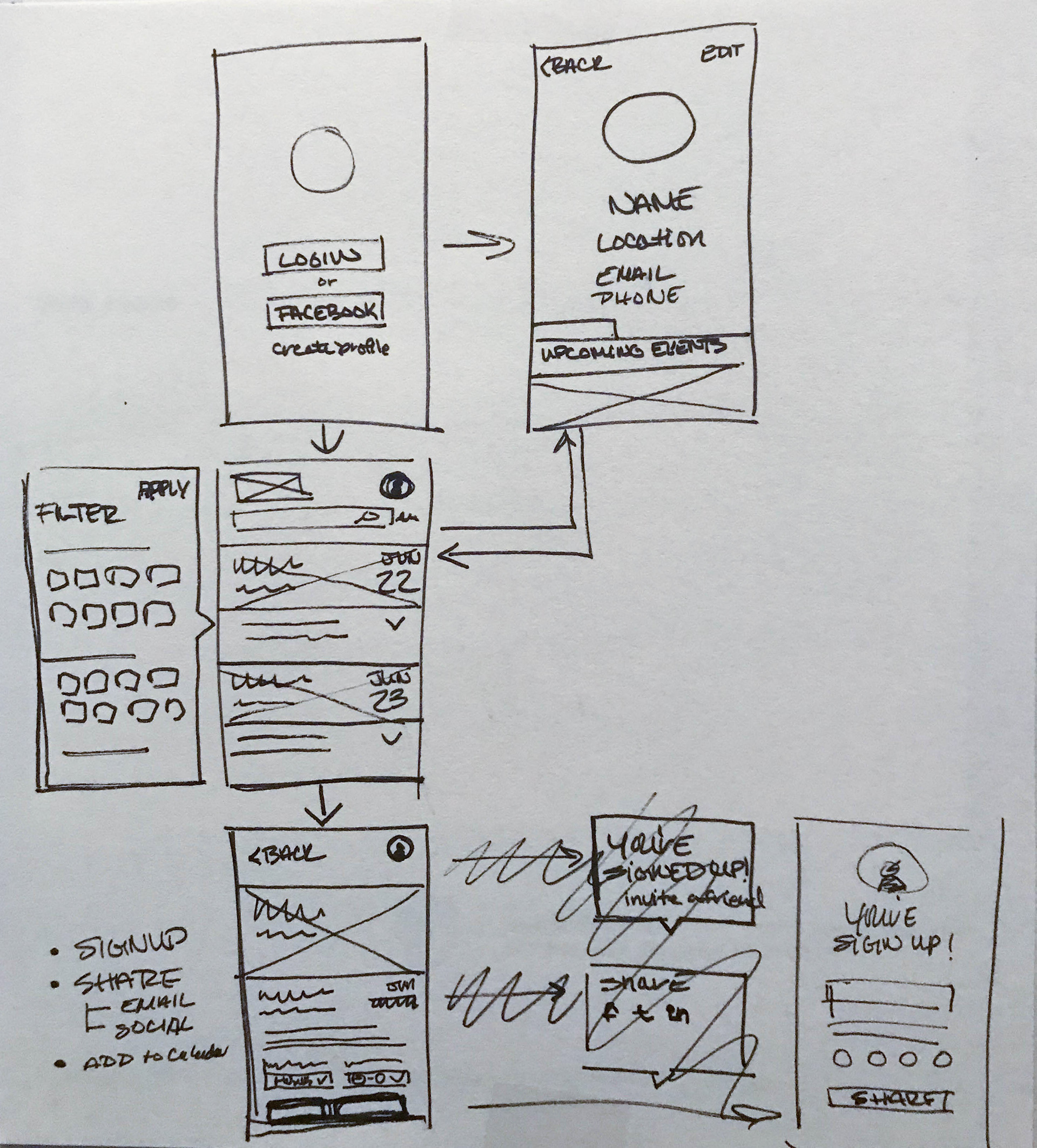

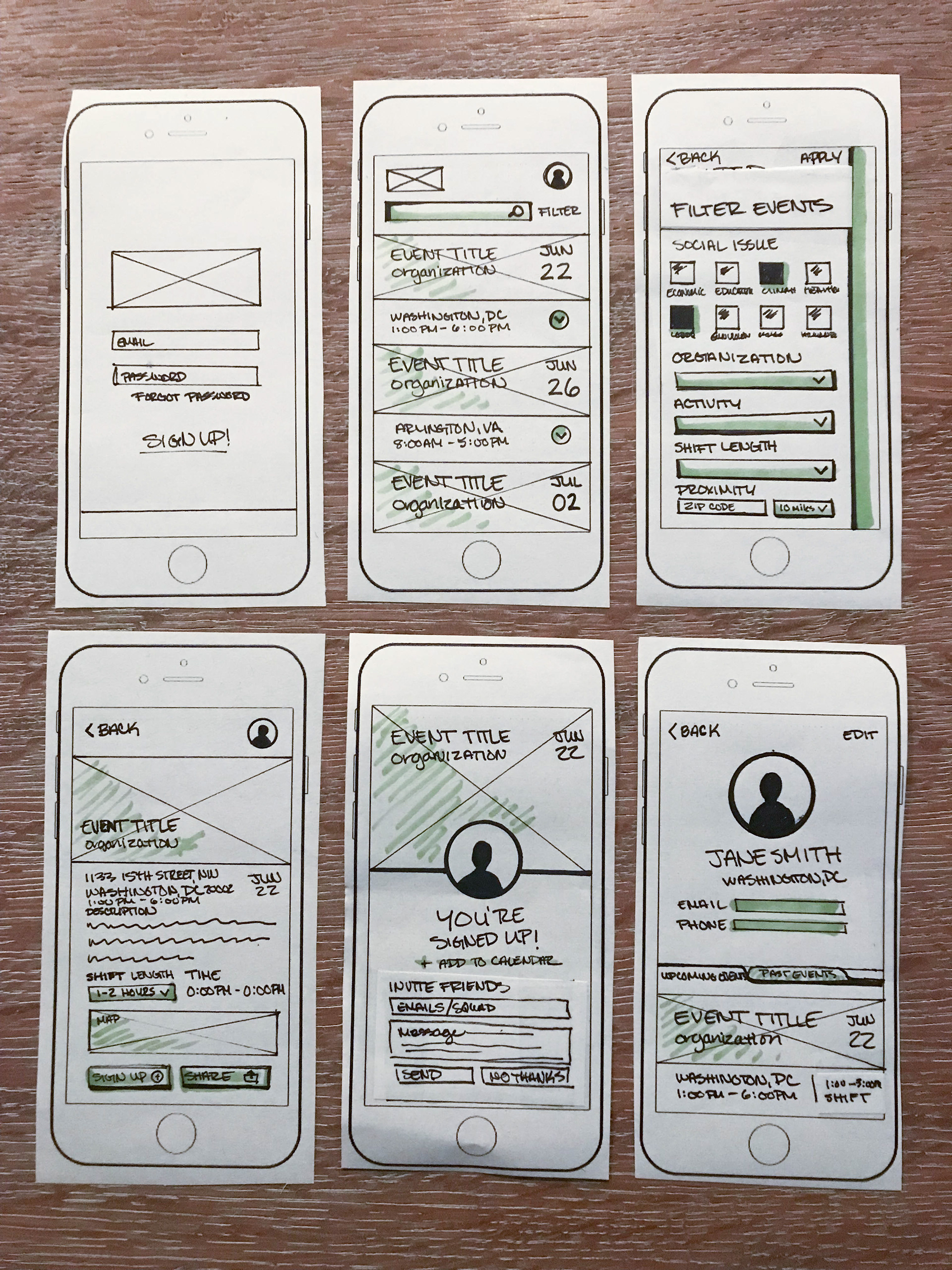
User flow sketches and paper prototypes
DESIGN PROCESS
After reviewing my research I set out to create a mobile application that makes it easier for users to volunteer wether they have 20 minutes or 20 hours.
User Flows and Paper Prototyping
First I mapped user flows and wireframes for the event screen and event filter, profile screen, and sign up confirmation with an email / social media share opportunity. I then moved to paper prototypes to facilitate testing with users. After receiving feedback on the user flow recommended adjustments were made to make navigation more intuitive. I then expanded the prototype to include additional features that addressed other themes that had presented in our user interviews: the ability to organize with friends and/or groups and directly asking users to get involved.
Balsamiq Prototype
Once I moved to Balsamiq to create a clickable prototype we were further able to refine the user flow and asked myself — what will keep the users coming back?
I added the ability to set and track goals for volunteer hours completed and view recent activity from friends and organizations to encourage continuous engagement and provide accountability. Notifications allow organizations show tangible results from participation and send calls to action — addressing the “No one asked me” response that I encountered during my research. For maximum impact I chose to focus and refine three main features:
The result is Blue Future Ambassador — a mobile application allowing users to participate in a variety of volunteer opportunities based on what works best for their schedule. It provides the ability to participate in 2–8 hour shifts or donation opportunities such as food / clothing drives, call / postcard campaigns, and care package programs, making volunteering and charitable giving easy and accessible.
Blue Future will be able to continuously engage with their target audience through communications (i.e. event results and calls to action) with new and returning volunteers, driving increased engagement through building relationships and sponsored volunteer opportunities with their nationally recognized partners.
Experience the Blue Future Ambassador prototype in Balsamiq
